Remembering the fighter pilot who flew through the Eiffel Tower... He's Gone West...
In the spring of 1944 Bill and his P-51C, the 'Berlin Express' were near Paris when the scene that is immortalized in the artwork by Len Krenzler of Action Art that leads this article took place. Bill had followed this Bf109 from the bombers he was escorting when most of the German fighters left. The two planes had been in a running dogfight. The German pilot flew over Paris hoping that the heavy German anti-aircraft artillery would solve his problem and eliminate Overstreet and the 'Berlin Express', though Bill managed to get some hits in at about 1500 feet. The German's engine was hit, and Bill stayed on his tail braving the intense enemy flak. His desperation undoubtedly growing, the German pilot aimed his plane at the Eiffel Tower and in a surprising maneuver, flew beneath it. Undeterred, Bill followed right behind him, scoring several more hits in the process. The German plane crashed and Bill escaped the heavy flak around Paris by flying low and full throttle over the river until he had cleared the cities heavy anti-aircraft batteries.
WWII fighter pilot who flew THROUGH the Eiffel Tower to take down a German plane dies in Virginia aged 92
-
•William Overstreet Jr., a former captain in the U.S. Air Corps, passed away on Sunday at a hospital in Roanoke
-
•He famously flew his plane beneath the Eiffel Tower in Nazi-occupied Paris in 1944, lifting the spirits of French troops on the ground
-
•In 2009, he was presented France's Legion of Honor
Published: 18:35, 3 January 2014 | Updated: 01:45, 4 January 2014
A World War II fighter pilot who gained fame for dramatically flying beneath the Eiffel Tower's arches to take down a German aircraft has died aged 92.
William Overstreet Jr. died on Sunday at a hospital in Roanoke, Virginia, according to his obituary, but there was no indication of the cause of his death.
Overstreet's famously flew his P-51C 'Berlin Express' beneath the Eiffel Tower in Nazi-occupied Paris in 1944, which has been credited with lifting the spirits of French Resistance troops on the ground.
For his valiant service, the French ambassador to the United States presented Overstreet with France's Legion of Honor at the National D-Day Memorial in Bedford in 2009.
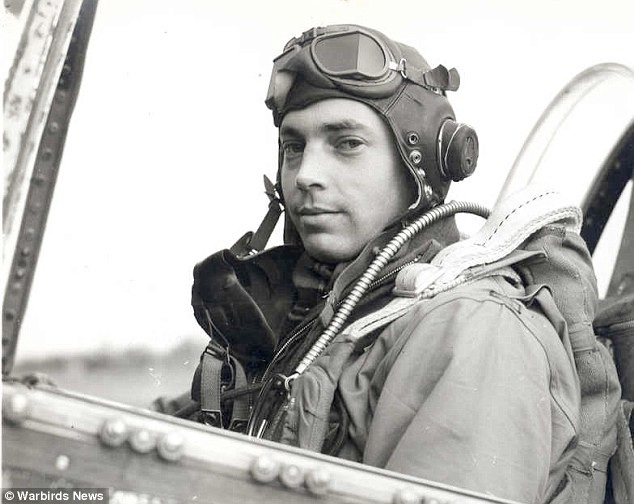
Hero: World War II Aviator Bill Overstreet Jr., best known for flying beneath the Eiffel Tower in pursuit of a German plane, is pictured in his military days. He passed away in Virginia on Sunday, aged 92
Before the ceremony, Overstreet had previously said that, if he lived long enough to receive the Legion of Honor, he would be accepting it in memory of his fallen brothers.
In particular, he wanted to pay tribute to a friend, Eddy Simpson, who died fighting the Nazis on the ground so his comrades, including Overstreet, could escape.
After the award was pinned to his lapel, Overstreet said: 'If I said, "Thank you," it wouldn’t be enough,' before adding: 'What more than "thank you" do you need?'
Overstreet was also awarded hundreds of other medals for his service in the 357th squadron of the U.S. Army Air Forces, his obituary said.
He was born in Clifton Forge, Virginia in 1921 and after Pearl Harbor, he enlisted in the Air Corps as a fighter pilot.
By February 1942, he was a private and sent to California for flight training; here, his instructors prepared him for the unexpected mid-flight by cutting the engine as he landed.
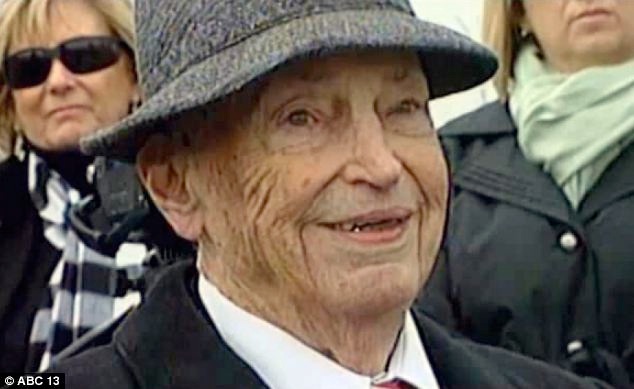
Remembered: Overstreet was presented with France's Legion of Honour in 2009
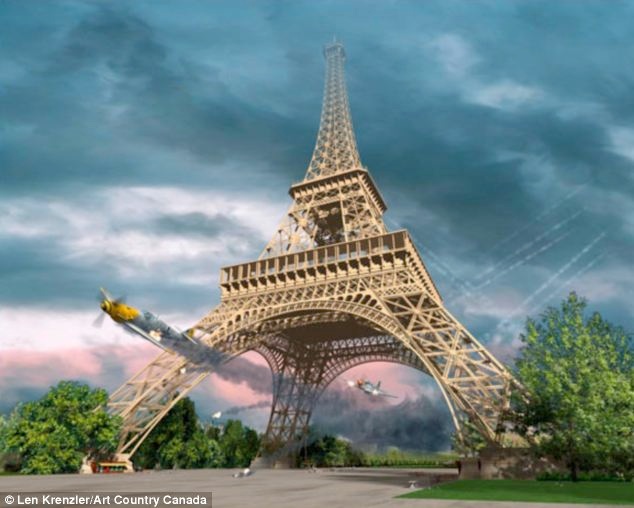
Action: An artist's depiction of the dramatic moment shows Overstreet in his P51 Mustang chasing an ME 109 under the Eiffel Tower in Spring 1944. He was able to shoot the plane down
Overstreet credited this extreme training method with preparing him for the unexpected in war, Warbirds News reported.
During training in 1943, he suffered a near-death crash when his plane, a Bell P-39 Airacobra, began spinning as he practiced maneuvers, and he was unable to control it.
He eventually forced his way out through the doors and found himself standing amid the wreckage.
When he flew in World War II, he suffered another freak accident when his oxygen line cut out as he flew 25,000 feet over France.
He passed out but snapped awake and controlled the plane and dodged trees in front of him to figure out where he was and land safely. Newspapers at the time reported that he could not remember a whole 90 minutes of the flight.
In the spring of 1944, he was following a German aircraft over Paris, with the two planes firing at each other. Overstreet eventually hit the other pilot's engine.
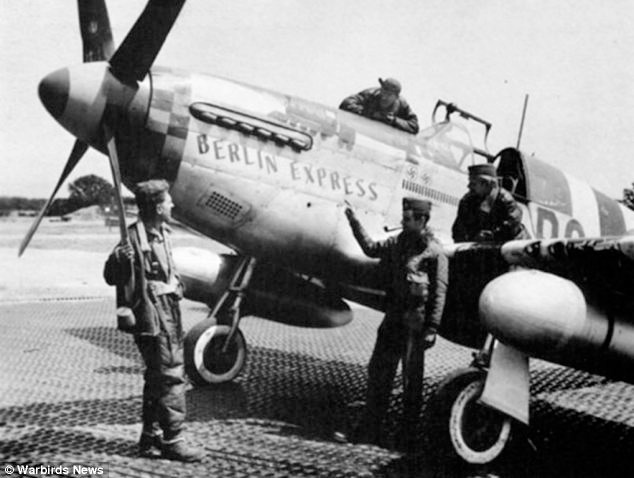
Aircraft: Overstreet is pictured by his P-51 'Berlin Express', the plane he flew beneath the Eiffel Tower
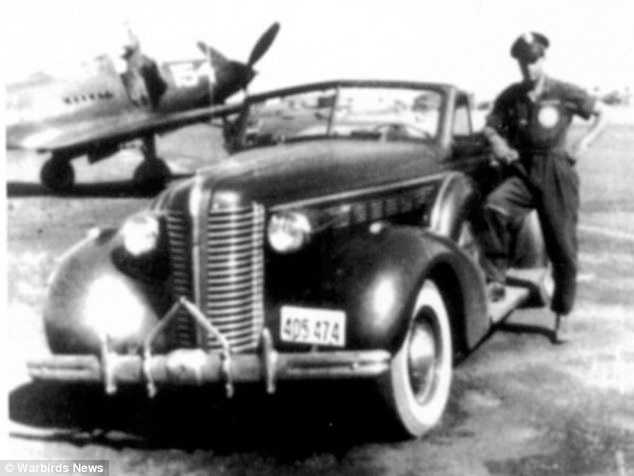
Proud: Overstreet is pictured in 1943 with his cherished 1938 Buick in California, where he trained
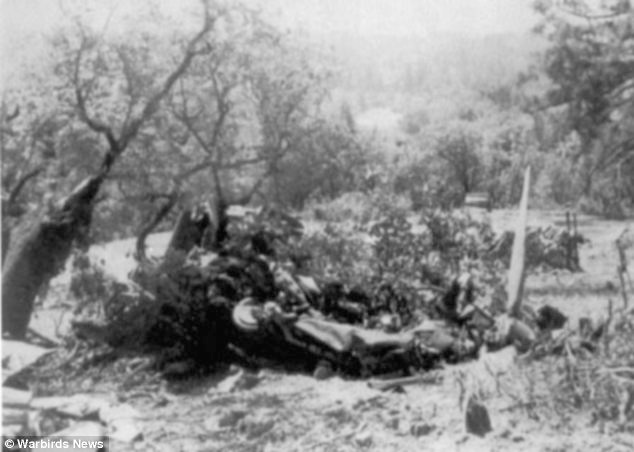
Close call: The wreckage of his Bell P-39 Airacobra which spun out of control mid-air as he completed combat training in 1943. He managed to force his way out of the craft and walked away unhurt
As the German pilot desperately sought to out-maneuver Overstreet, he flew beneath the Eiffel Tower - but the brave American flew directly beneath it and continued to fire.
The German plane crashed and Overstreet was able to escape the city.
The astounding show of skill and bravery lifted the spirits of the French, french dignitary, Bernard Marie, told the Roanoke Times.
He said he only fully understood the importance of Overstreet's feat when he spoke with his father about it.
'My father began shouting out me - "I have to meet this man",' Marie said. 'This guy has done even more than what people are thinking. He lifted the spirit of the French.'
After flying further missions, including a top secret escort mission, his tour of duty ended in October 1944 and he returned to the U.S.
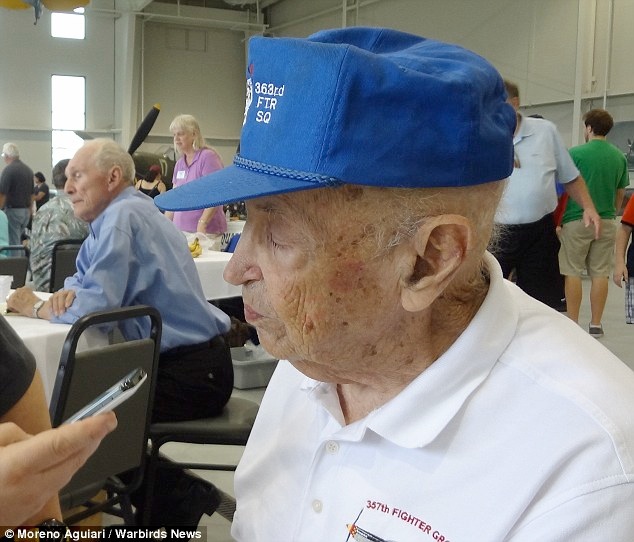
Loss: Bill Overstreet is pictured at an event, Warbirds Over the Beach, in 2013. After finishing his service, he returned to the U.S. and became an accountant - but he continued to attend veterans events
He went on to teach at a gunnery school in Pinellas, Florida and when he was released from active duty, he remained on the Reserves.
He went on to work as General Manager of Charleston Aviation in West Virginia before moving to Roanoke in 1950, where he worked as an accountant until he was 65.
Before his death, he also worked with numerous charities and veterans groups, appearing at air shows and gatherings with fellow veterans. He was preceded in death by his wife, Nita.
Anne Mason Keller, Overstreet's niece, said of her uncle: 'He was a fighter, he was always a perfect gentleman. He was concise, focused with a delightful sense of humor and a twinkle in his eyes.
'He was always humble. Whenever the press interviewed him, he said, "I didn't do anything, we were a team".'
His family has asked that those attending his memorial service on Saturday those wear something either or both red and yellow, his squadron's colors.